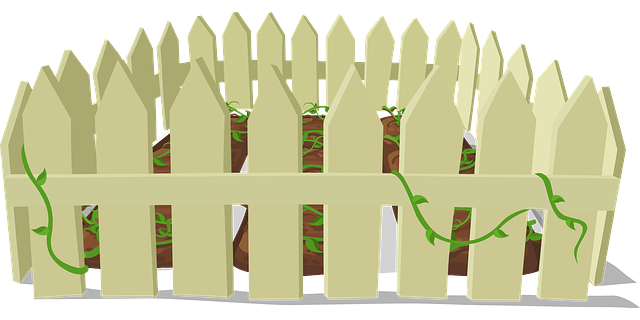Large properties present unique challenges when it comes to fencing, requiring solutions that balance durability, aesthetics, and affordability. This article explores cost-effective fencing options tailored for extensive land parcels. We delve into the distinct needs of large properties, comparing traditional methods with innovative, budget-friendly alternatives. By examining durable materials, practical design ideas, and expert installation tips, homeowners can enhance their outdoor spaces without compromising quality or spending excessive resources.
- Understanding Large Property Fencing Needs
- Traditional vs. Cost-Effective Solutions
- Innovative Material Choices for Durability and Economy
- Design Ideas to Maximize Budget
- Installation Tips for Longevity and Savings
Understanding Large Property Fencing Needs
Fencing a large property presents unique challenges compared to smaller plots. The primary consideration is durability and strength to withstand potential damage from wildlife, extreme weather conditions, or vandalism. Given the expansive area, aesthetics also play a significant role; the fence should complement the surrounding landscape rather than disrupt it.
Large properties often require fences that can span considerable distances, necessitating cost-effective materials that are easy to install and maintain. Additionally, security is a key concern, especially in rural areas. The right fencing solution should offer visual deterrence while allowing for unobstructed lines of sight across the property for better surveillance and safety.
Traditional vs. Cost-Effective Solutions
In the realm of fencing, traditional methods have long been the go-to option for many property owners. These solutions, while aesthetically pleasing and offering a sense of security, can be quite costly, especially for large properties that require extensive fencing. The expense often stems from the materials used, such as wood or metal, which demand regular maintenance to prevent deterioration. Additionally, labor costs for installation can significantly add to the overall price tag.
In contrast, modern cost-effective fencing solutions present a compelling alternative. These innovative options prioritize affordability and durability without compromising on functionality or security. Materials like vinyl, plastic, or even recycled metals are now commonly used, eliminating the need for frequent maintenance. Furthermore, these advanced systems often come with quick installation processes, reducing labor expenses. As a result, property owners can enjoy robust, long-lasting fences that provide excellent value for their investment.
Innovative Material Choices for Durability and Economy
In today’s market, innovative material choices offer a cost-effective fencing solution for large properties without compromising durability. Traditional materials like wood and metal are still popular but can be expensive to maintain over time. Alternatively, advanced composite materials combine the best of both worlds—the strength of metal with the low-maintenance characteristics of plastic or vinyl. These modern options not only reduce long-term costs but also enhance the overall aesthetics of a property.
Additionally, recycled materials are increasingly being used in fencing construction, contributing to environmental sustainability while keeping costs down. This trend not only reduces waste but also lowers production costs, making it an attractive choice for large properties looking to balance economy and eco-friendliness. These innovative material choices not only ensure robust fences but also provide a reliable and wallet-friendly option for property owners.
Design Ideas to Maximize Budget
When designing fencing for large properties, cost-effectiveness can be achieved by prioritizing functionality and simplicity. One design idea is to opt for a straightforward, linear layout that follows the natural contours of the land. This approach reduces material waste and labor costs significantly. Instead of intricate patterns or custom designs, focus on solid, traditional fence styles like picket fences or post-and-rail fences, which are both aesthetically pleasing and budget-friendly.
Another cost-saving strategy is to use locally sourced materials and choose options that can be easily assembled. For example, wooden posts and pre-assembled panels can be more economical than crafting custom pieces on-site. Additionally, considering the placement of gates and entry points strategically can simplify the design while enhancing security. By balancing aesthetics, functionality, and cost, homeowners can create durable and attractive fencing solutions without breaking the bank.
Installation Tips for Longevity and Savings
When installing fencing for large properties, prioritizing proper technique and materials is key to longevity and cost-effectiveness. Start by assessing the terrain and choosing a fence design that complements the landscape while withstanding potential challenges like inclines or dense vegetation. Use high-quality posts and rails, ensuring they’re deeply anchored into the ground for stability. Regularly maintain your fence by inspecting it for signs of wear and tear, clearing away debris, and re-applying protective coatings or treatments as needed.
Consider eco-friendly materials to reduce long-term costs and environmental impact. Treated wood and vinyl are durable options that require minimal maintenance. Additionally, opting for energy-efficient designs can lower heating and cooling expenses around the property. Regular upkeep, smart material choices, and efficient installation practices will ensure your fencing solution stands the test of time while keeping costs manageable.
